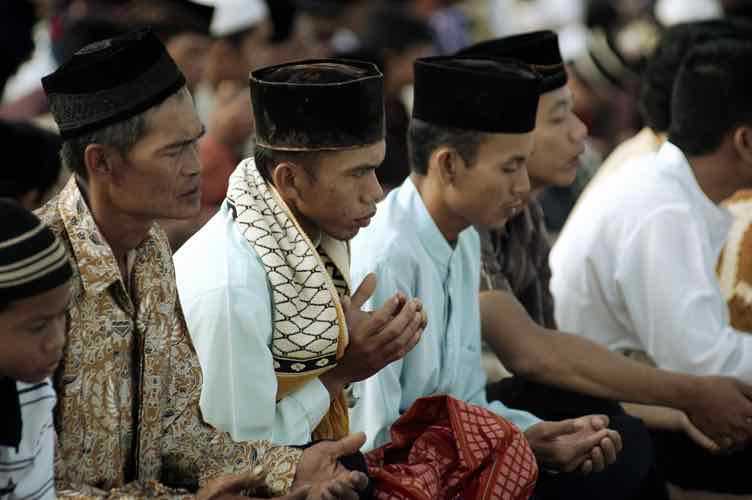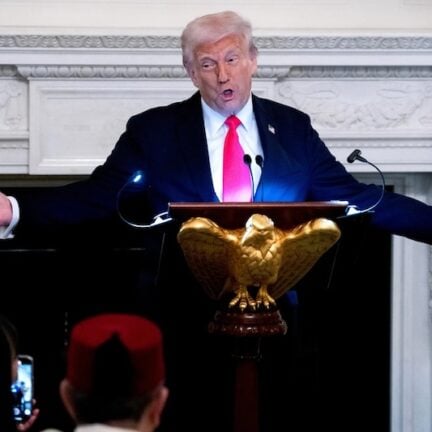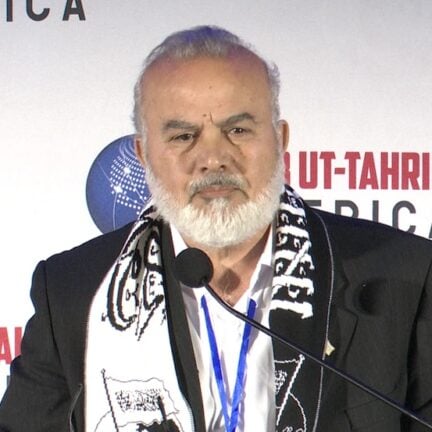Most Muslims around the world feel a special affection for the Muslims in the countries of Southeast Asia, Indonesia, Malaysia, Brunei Dar us Salaam and the southern regions of Thailand and the Philippines. This special affection is directly linked to what is said about the spread of Islam to these particular parts of the world.
Islam came to the Levant, the north of Africa, Central Asia and Southeastern Europe on the back of conquests by Muslim armies. In most of these parts of the world the original inhabitants first resisted Islam out of unfamiliarity with the new religion. But, after the Islamic systems were implemented over them and they realized that these replaced tyranny, injustice and exploitation with fairness, justice and opportunity, they developed a deep appreciation for Islam and converted.
In Southeast Asia, however, the local people welcomed Islam from the very start. They did not resist the coming of the new religion but rather invited Muslim preachers to explain the core concepts of Islam, and then converted on the basis of the intellectual strength of these concepts.
Unfortunately, besides this not much is commonly known regarding the origins of Islam in Southeast Asia. Who brought Islam to this part of the world? When? How quickly was it adopted by the local people? What drove them to adopt this new religion?
This article “The Origins of Islam in Indonesia” was written to answers these questions. It will be published in three parts. This first part looks at the first contacts between Islam and the people of Indonesia, and how Islam spread on the island Sumatra following these first contacts. The second part will look at how Islam spread to the other main Indonesian islands, Java, the Moluccas, Sulawesi and Kalimantan. The third and final part will investigate the lessons that should be learned from the history of Islam in Indonesia.

The main islands of Indonesia, bordered by Malaysia and Thailand in the north and Australia in the south.
First contacts
Following establishment by Prophet Muhammad (saw) of the Islamic State in Al Madina, Islam spread quickly across the Arabian Peninsula – first to Mecca, then southward to Yemen and eastward to the Arabian Gulf. The people living in these areas had since centuries traded with people from the other port cities of the Indian Ocean in present day Iran, Pakistan, India, Sri Lanka, Thailand, Indonesia and Malaysia. Due to these historic trade relations awareness of the new religion of the Arabian Peninsula spread eastwards very rapidly.
Consequently, Muawiyah bin Abi Sufyan (ra), a companion of Prophet Mohammed (saw) who lead the Islamic State Al Khilafah from 41 to 60 Hijri, 661 to 680 Christian Era, already received a letter from The East during his reign, from the Maharaja of Srivijaya, a kingdom which covered Sumatra in present day Indonesia and parts of the Malayan Peninsula: “From the King of Al-Hind whose animal cages have one thousand elephants, (and) whose palace is made of gold and silver, who is served by the kings’ daughters, and who has two great rivers that irrigate the aloe trees, to Muawiyah ….” [1]
Most likely this king had learned about Islam from Muslim traders that had visited and settled in his realm. Chinese sources mention, namely, that around 26 Hijri, 647 Christian Era, there already was an Arab settlement on the west coast of Sumatra. [2]
The presence of Islam on Sumatra grew in 99 Hijri, 717 Christian Era, when 35 ships carrying Muslim traders arrived in Palembang. These traders had fled a revolt in Canton, China, and decided to resettle on Sumatra. [3]
In that same year, Khalifah ‘Umar bin ‘Abd Al ‘Azziz, who ruled the Islamic State Al Khilafah from 99 to 102 Hijri, 717 until 720 Christian Era, received another letter from the Maharaja of Srivijaya. This letter indicated that Islam had by that time attracted more than a little of his attention: “From the Maharaja, who is the descendant of a thousand kings, whose consort, too, is the descendant of a thousand kings, in whose stables are a thousand elephants, and in whose territories are two rivers which irrigate plants of aloes, odoriferous herbs, nutmeg, and camphor, whose fragrance spreads to the distance of twelve miles. To the King of the Arabs, who does not associate other gods with God. I have sent to you a gift, which is not much of a gift but (just) a greetings and I wish that you may send to me someone who might teach me Islam and instruct me in its Laws. Peace.” [4]
The first footholds, Lamreh and Perlak
Some 200 years later, Muslim traders had settled in all major trading hubs along the Southeast Asian coastline and made Islam part of the fabric of society. Many of them had married local women and some even developed trusted relations with the local aristocracy. [5] For example, the ambassador sent by the Maharaja of Srivijaya to China in 904 Christian Era was a Muslim. [6]
A further 200 years or so later the Muslims had even become part of the aristocracy of present day Indonesia. The kingdom of Lamreh, on the northern tip of Sumatra, is considered to be the first area were this occurred. According to the writing on a tombstone there, Sultan Sulaiman bin Abdullah bin Al Bashir of Lamreh died in 608 Hijri, 1211 Christian Era, meaning the royal family of Lamreh must have converted to Islam well before that date. [7]
In 1292 the famous Italian traveler Marco Polo visited the port city of Perlak (also written Pereulak) on northern Sumatra, very close to Lamreh, and found the city to also have a Muslim ruler. He recorded in his journal that the kingdom was “so much frequented by Saracen (i.e. Muslim) merchants that they have converted the natives to the Law of Mahommet (i.e. Mohammed)”. [8] Apparently, the Muslim traders that visited and settled in Perlak had at one stage brought over Islamic scholars, with the express intent of inviting their business partners to Islam. These scholars also settled in the area, married local women, and slowly but gradually spread Islam amongst the people. On the 1st of Muharram 225 Hijri, 840 Christian Era, one of the descendants of these Muslims, a certain Maulana Seyyid Abdulaziz Shah, established the Sultanate of Perlak. [9] This Sultan Abdulaziz Shah had then invited scholars from Arabia, Iran and Gujurat to move to his realm, to teach Islam to his people and arrange the affairs of the state according to Islamic teachings. Together with the Sultan these scholars set up Islamic education facilities from which Islam was spread throughout northern Sumatra. [10]
Samudra and Pasai
In 746 Hijri, 1345 Christian Era, the Muslim traveler Ibn Battuta visited another port city in northern Sumatra called Pasai, which he found to also be ruled by a Muslim. [11] In 1267 Christian Era king Merah Silua of this area had converted to Islam at the hands of a Sheikh Ismail, who had travelled to Sumatra from the Arabia Peninsula. [12] This event established the Sultanate of Samudra Pasai and the king adopted the name Sultan Malik us Saleh. This Sultanate of Sumadra Pasai became a regional power house, for example developing close relationships with China whom it sent it two ambassadors, Sulayman and Shams al Din, in 1282 Christian Era. In return the Chinese emperor sent various emissaries, amongst whom was the famous Chinese Muslim Admiral Cheng Ho who visited the Sultanate of Sumadra Pasai three times with his fleet. [13]
The sultans of Sumadra Pasai used their power and influence to spread Islam in their environment. Sultan Malik us Salih on his deathbed ordered his family to continue the ordering of good and the forbidding of evil, al amr bil m’aruf wan nahy ‘anil munkar, as per Quranic injunctions. He also ordered his son Al Malik Al Mansur, who was to take over as Sultan, to continue enforcing the Law of the Quran and to prevent anything contrary to the Shari’ah from gaining a foothold in the Sultanate. [14] According to local tradition, Sultan Malik us Salih told his family: “Do not transgress the commandments of Allah, the Exalted, or the sayings of Prophet Muhammad, the Apostle of Allah. My child, you must not fail to heed well to the counsel I am giving you. When there is anything you wish to do, you must consult the eldest among your minsters. Do not hastily embark on any course of action… So conduct yourself that you are always on your guard against the things which are not in accordance with the Holy Law. Dot not oppress or despoil the servants of Allah the Exalted by unjust treatment. Do not be backward in enjoining good and forbidding evil… for this mortal world will pass away and only the world to come will last forever.” [15]
Ibn Battituta stayed in the Sultanate of Sumadra Pasai for about two weeks, as a guest of Sultan Al Malik Az Zahir. According to his notes Ibn Battuta was greatly impressed with and pleased by the piousness of Sultan Al Malik Az Zahir, his zeal in the performance of his Islamic duties and his love for study and debate with the religious scholars that advised him. [16] The scholars at the court of Sultan Al Malik Az Zahir included Sharif Amir Seyyid from Shiraz, Taj Al Din from Isfahan, and also ‘Abd Allah bin Muhammad bin ‘Abd Al Qadir bin ‘Abd Al Azzeez bin Al Mansur Abu Ja’afar Al ‘Abbas Al Muntasir bi Allah, a grandson of the last ‘Abbassid Khalifah. [17] Ibn Battuta reported that Sultan Al Malik Az Zahir organized Islamic education for both the young and the old, and that he had invited Islamic scholars from all over the Muslim work to come and live in his Sultanate for this purpose. These scholars organized regular halaqas, circles, in the mosques, some dedicated to the basic knowledge of Islam for adults, others to dedicated to the basic knowledge of Islam for youths, and again others dedicated to advanced learning in Islamic sciences and law. [18] This way the Sultanate of Sumadra Pasai became a center of Islamic learning. The Sultana of Malacca, for example, across the Straight of Malacca from Sumadra Pasai in present day Malaysia, relied heavily on scholars from Sumadra Pasai. [19]
Ibn Battuta also reported that Sultan Al Malik Az Zahir regularly order his army to open surrounding areas for the influence of influence of Islam. Due to these efforts, by the 15th century Christian Era large parts of Sumatra had been Islamized, including the central and southern parts of the Island such as Siak, Jambi, Palembang and Minangkabau. [20]
The Sultanate of Sumadra Pasai entered decline during the early years of the 16th century Christian Era, when two sons of the Sultan began fighting for power. The Portuguese tried to use the struggle between Zayn Al ‘Abidin and Zayn Al Din to take control of the port city of Pasai. This lead another Sultanate on Sumatra, the Sultanate of Aceh, to invade the Sultanate of Samudra Pasai and bring it under its control in 1524 Christian Era. [21]
Aceh
Close to the Sultanate of Perlak was the kingdom of Indra Purba. This kingdom was attacked and occupied by an army of the Emperor of China, which then forced the local people to become Buddhist. The people of Indra Purba secretely reached out to the Sultanate of Perlak, asking for help with their situation. In 1180 Christian Era the ruler of Perlak, Sultan Malik Muhammad Shah Makhdum Alaiddin Johan, personally responded to the call for help and lead an army to Indra Purba to fight and expel the Chinese. Assisting the Sultan was Sheikh Abdullah Kan’an, who lead a group of Arab soldiers from which had been sent by the Khalifah to Sumatra. [22] On the 1st of Ramadan 601 Hijri, 1205 Christian Era, Sultan Johan won a final victory over the Chinese. He then combined Perlak and Indra Purba to establish the Sultanate of Aceh Dar As Salaam. He appointed Sheikh Abdullah Kan’an as his Mufti to advise him and manage the spread of Islamic learning throughout this Sultanate. [23]
Later Sultans in Aceh began work to spread the influence of their Sultanate. In 1520 Christian Era Sultan ‘Ali Mughaya Shah ordered his army to invade the Sultanate of Daya on the westcoast of Sumatra. The Sultana of Daya had been founded by Meurah Popoop (also known as Tengku Sagoop). Much isn’t know about Meurah Popoop, except that he came to the area as an Islamic preacher and after converting the area to Islam the people apparently appointed him as their Sultan. The Sultanate of Daya fell into disorder after the death of Sultan Meureuhom Onga, a descendant of Sultan Meurah Popoop, which lead Sultan ‘Ali Mughaya Shah of Aceh to annex it. Shortly thereafter, in 1521 Christian Era, Sultan ‘Ali Mughaya Shah launched an attack on the Sultanate of Pidie, on the eastern side of Sumatra. This mission lead to wholesale Islamization of the inner territories of northern Sumatra and brought the entire northern territory of Sumatra under the control of the Sultan of Aceh. [24]
In 1539 Christian Era, then, Sultan ‘Ala Al Din Ri’ayat Shah Al Qahhar of Aceh sent emissaries to the king of Batak in central Sumatra. The Sultan ordered the king, who was at that time a Hindu, to convert to Islam. When the king of Batak refused, the Sultan sent an army. Supported by 300 Turkish soldiers [25], this army defeated the Batak army, whereby the area entered into the Sultanate of Aceh. This enabled Islam to spread further southward on Sumatra. [26]
The Turkish support for the Aceh army was the result of contacts established by the Sultan of Aceh with the Ottoman Khilafah. The Ottoman Sultan Sulayman The Magnificent, the Khalifah of the Muslims at that time, tried to improve relations between the Muslims in the various parts of the world. As part of this effort he sent emissaries to the east during the 1530s Christian Era. Shortly thereafter the contacts between the Sultanate of Aceh and the Ottoman Khalifah in Istanbul were formalized. In 973 Hijri, 1566 Christian Era, Sultan ‘Ala Al Din Ri’ayat Shah Al Qahhar sent a mission to Ottoman Khalifah Sulayman The Magnificent in order to strengthen Islam in Aceh. [27] The mission handed over Sultan ‘Ala Al Din Ri’ayat Shah Al Qahhar’s letter in 974 Hijri, 1567 Christian Era, to Khalifah Sulayman The Magnificent’s son, Khalifah Selim II. In his correspondence the Sultan highlighted that he wanted the Khalifah to see Aceh as part of his domain and the Muslim therein as his citizens. He wrote: “Would Your Majesty please inform the governor-generals (Beylerbeyi) of Eygpt and of Yemen and the Beys (sub-governors) of Jeddah and Aden that we are not your enemies, but your servants… Aceh is one of your villages and I am a servant of your office.” Khalifah Selim II responded by sending to Aceh soldiers, Islamic scholars, craftsman and other experts that could make for the Sultan modern weapons, including cannons. In his letter to Sultan ‘Ala Al Din he wrote: “When your letter came here, my father Sultan Suleyman Han was fighting against the infidels in the Szigetvar war in Hungary. After the conquest of this cattle, he died and I took over his duties. I have decided to combat the infidels on your side. We will always send soldiers to you in order to overcome the enemies of religion and to get rid of those who are attacking on Muslim lands in those sides. You are required to inform us in detail whatever affairs occur in your parts in accordance with your handle of affairs. Galleons were prepared; they will be sent after they are loaded. Your ambassador, who came here, did his duty with good manners and he is now being sent with our highest permission”. [28]
From that moment onward the Friday khutbah in Aceh was read in the name of the Khalifah in Istanbul. [29]
The close relations between the Islamic heartland ruled by the Ottoman Khalifah from Istanbul, and the Sultanate of Aceh, was not limited to military cooperation, however. In order to support the spread and adoption of Islam in the Sultanate, from 1570 Christian Era onwards numerous Islamic scholars from Egypt, the Hijaz, Yemen and Gujarat travelled to Aceh to teach Islam. Islamic schools flourished and in-depth knowledge of Arabic became widespread amongst the Acehnese elite. In fact, Arabic became the language of the official language of the Sultanate, as indicated by the fact that the letters written by the Sultanate during this time, including a letter sent to the English Queen Elizabeth via her emissary James Lancaster who visited Aceh in 1602 [30], were in Arabic. [31]
In general, the Sultanate of Aceh followed the earlier example of the Sultanate of Sumadra Pasai to organize the spread of Islam through education. It took over the system from Sumadra Pasai to bring scholars to the mosques and have them teach the people from there. Beyond this, however, the Sultans of Aceh also established dedicated centers of Islamic learning. The “meanusah” was a school were young children were taught the basics of Islam and both recitation and memorization of the Holy Quran. Students that wanted to increase their knowledge of Islam beyond this could enter a “rayang”, where students would be introduced to the Islamic sciences. To specialize in any Islamic science, after completing his education at the raying the student would have to enter a “dayah”. Separate dayas were established in the Sultanate, at least one for every Islamic science. So there was a daya for tafsir, another daya for fiqh, and so on. Initially the educators at all these facilities were scholars from Arabia, Persia and India, but as they matured more and more Indonesians took up the role of teacher. [32]
[1] “Islam in the Indonesian World: An Account of Institutional Formation”, Azyumardi Azra, Mizan Publishers, 2006. See also: “Two letters from the Maharaja to the Khalifah: A study in the early history of Islam in the East”, S.Q. Fatimi, https://www.yumpu.com/en/document/view/11876730/two-letters-from-the-maharaja-to-the-khalifah [2] “The coming of Islam to North Sumatra”, A.H. Hill, Journal of Southeast Asian History, 1963, http://www.jstor.org/stable/20067418 [3] “Islam in the Indonesian World: An Account of Institutional Formation”, Azyumardi Azra, Mizan Publishers, 2006 [4] “Two letters from the Maharaja to the Khalifah: A study in the early history of Islam in the East”, S.Q. Fatimi, https://www.yumpu.com/en/document/view/11876730/two-letters-from-the-maharaja-to-the-khalifah
Interestingly, another narration transmitting the same information ends with: “Who might teach me Islam and explain it to me. Peace.” Again another narration adds to the body of the letter: “I have sent you a present of musk, amber, incense and camphor. Please accept it, for I am your brother in Islam.”
[5] Ibid. note 2 [6] Ibid. note 3 [7] “A History of Modern Indonesia since c. 1200”, M.C. Rickleffs, Palgrave MacMillan, 2001 [8] Ibid. note 2 [9] https://id.wikipedia.org/wiki/Kesultanan_Peureulak and http://melayuonline.com/eng/history/dig/371/perlak-sultanate [10] “Ottoman Connections to the Malay World: Islam, Law and Society”, Saim Kayadibi (ed.), The Other Press, 2011 [11] “Aceh and the Portuguese: A Study of the Struggle of Islam in Southeast Asia 1500 – 1579”, Amirul Hadi, UMI Dissertation Services, 1992, http://www.acehbooks.org/search/detail/3759?language=en [12] Ibid. note 3 [13] Ibid. note 11 [14] Ibid. note 3 [15] “A History of Early Southeast Asia: Maritime Trade and Societal Development 100 – 1500”, Kenneth R. Hill, Rowman & Littlefield Publishers, 2011 [16] Ibid. note 2 [17] Ibid. note 11 [18] Ibid. note 3 [19] Ibid. note 11The Sultanate of Malacca was founded in 817 Hijri, 1414 Christian Era, when the local ruler Parameswara converted to Islam at the hands of Sheikh Sayyid ‘Abd Al Azzeez from Jeddah. Parameswara then took the name and title of Sultan Muhammad Shah. “Islam in the Indonesian World: An Account of Institutional Formation”, Azyumardi Azra, Mizan Publishers, 2006
[20] Ibid. note 3 [21] Ibid. note 11 [22] “Ottoman Connections to the Malay World: Islam, Law and Society”, Saim Kayadibi (ed.), The Other Press, 2011 [23] “Meurah Johan Syah; Masih Ingatkah Kita?”, Yusra Habib Abdul Gani, Serambi Indonesia, http://aceh.tribunnews.com/2015/04/22/meurah-johan-syah-masih-ingatkah-kita [24] Ibid. note 11 [25] “The Turkish Connection”, in “An Indonesian Frontier: Acehnese and Other Histories of Sumatra”, Antony Reid, NUS Press, 2004 [26] Ibid. note 11 [27] Ibid. note 24 [28] “Ottoman-Aceh Relations According to the Turkish Sources”, Ismail Hakki Göksoy, from “Mapping the Acehnese Past”, R. Michael Feener, KITLV Press, 2011; see also http://ivangkastyle.blogspot.qa/2014/12/ottoman-aceh-relations-according-to.html [29] Ibid. note 27 [30] “Ottoman Connections to the Malay World: Islam, Law and Society”, Saim Kayadibi (ed.), The Other Press, 2011 [31] “The Turkish Connection”, in “An Indonesian Frontier: Acehnese and Other Histories of Sumatra”, Antony Reid, NUS Press, 2004 [32] Ibid. note 3












